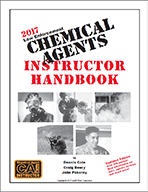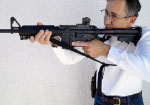Crisis Management 3
PHASE V - Tactical Response
Determining strategy is the next step in the process. This the responsibility of the senior law enforcement officer accepting command at the scene. Strategy refers to the science of planning the overall approach to the problem. His strategy should be based on an overall understanding of everything that is happening in and around the scene. Some of the areas that the Incident Commander may be considering are:- What the weather is like and how is it affecting the tactical force, hostages, and suspect?
- Has the suspect injured any hostages?
- If the scene is in a volatile area, is the potential violence behind the scenes greater than that in the containment area?
- What is the least violent course of action?
- What‘s the likelihood of success if negotiations continues?
- What effects will an assault have on the hostages, surrounding community and the suspect?
The incident commander should make his decisions in conjunction with other persons more knowledgeable in "Crisis Management" than he may be. He should employ all available information. After a strategy is decided upon, deliberate tactical planning must be initiated. Most tactical units work on a mission basis. The responsibility for developing and initiating a deliberate tactical plan is that of the tactical unit commander. Tactics is a means by which strategy can be implemented. More precisely it is the science of positioning and maneuvering forces into action. Although the incident commander has responsibility for the resolution of the incident the tactical commander has the experience and the knowledge on how to best deploy his forces for a tactical resolution. The skill possessed by the tactical unit commander in the field of tactics and the precision and thoroughness with which he plans will have a direct bearing on his success in any operation.
PHASE VI - Resolution
The goal of all crisis intervention is to resolve the conflict without injury or loss of life to any person involved. This includes:- Bystanders
- Hostages
- Law Enforcement Officers
- Suspects
- Negotiations and surrender
- Tactical team intervention
- Capitulation to the demands and escape
- Combination of 1 thru 3





